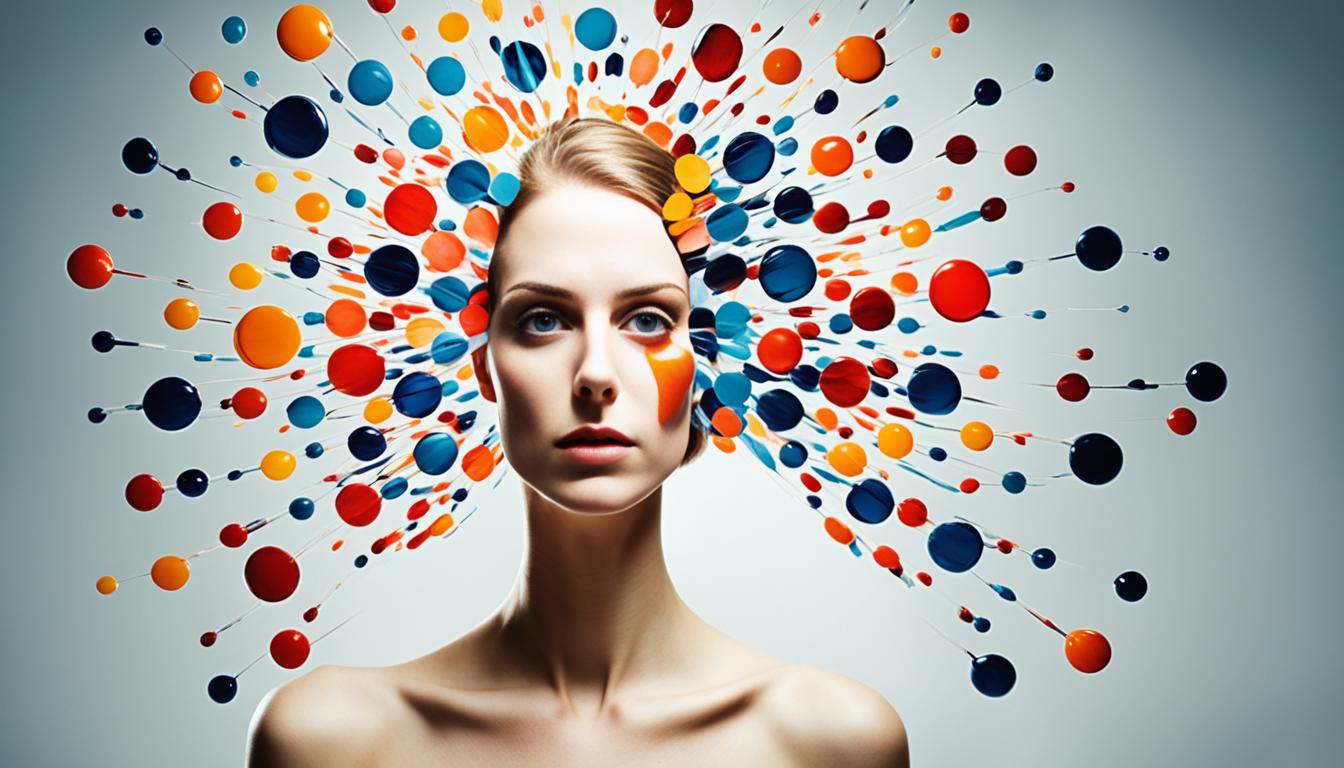Body dysmorphic disorder (BDD) is a psychiatric issue. It makes people obsess over or fear their looks. This disorder falls in line with conditions like OCD, the obsessive-compulsive disorder.
It can badly affect mental health. People with BDD may also suffer from major depression, anxiety, or eat too much or too little.
Doctors diagnose BDD using the DSM-5. They treat it with therapies like CBT and medications. Sometimes, stem cell therapy is an option.
Key Takeaways:
- Body dysmorphic disorder is a psychiatric disorder characterized by extreme preoccupation with perceived flaws in physical appearance.
- It is often classified as an obsessive-compulsive spectrum disorder.
- BDD can have a profound impact on mental health and overall well-being.
- Diagnosis of BDD is based on specific criteria outlined in the DSM-5.
- Treatment options include cognitive-behavioral therapy (CBT), medication, and stem cell therapy.
Prevalence and Clinical Presentation of Body Dysmorphic Disorder
Body dysmorphic disorder (BDD) is a condition that many people face. It affects about 1.7% to 2.9% of people, or 1 in 50 individuals. Both men and women can have BDD, but it’s slightly more common in women.
People with BDD are very focused on what they see as flaws in their looks. These can be issues with their skin, hair, or face. They often worry a lot about how they look.
For example, they might look in the mirror too much or ask for others’ opinions all the time. This can make their lives really hard. They might feel bad about themselves and not want to be around others.
Their mental health can also be badly affected. Many people with BDD feel depressed or anxious. And this can start when they are teenagers, but they might not get help until their thirties. This is because the problem isn’t always spotted early.
It’s vital to know about BDD to help people get better. If we see the signs early and get the right kind of help, we can make a big difference. Usually, treatments like cognitive-behavioral therapy (CBT) or medicine can help a lot.
Causes, Diagnosis, and Treatment of Body Dysmorphic Disorder
The cause of body dysmorphic disorder (BDD) is still a mystery. But, experts think many things might cause it. This includes genes. About 20% of people with BDD have a close family member with it too. Issues with how the brain processes chemicals like serotonin and dopamine might also have a role. Brain structure differences and inflammation could be connected too.
Diagnosing BDD needs a deep look at a person’s symptoms and actions. Mental health experts use the DSM-5. This book sets out what BDD behaviors and thoughts look like. For example, people with BDD might be overly focused on their appearance, seeing flaws that others don’t. They might also do certain actions over and over to cope with these feelings.
Treating BDD involves several options. One choice is medicines like selective serotonin reuptake inhibitors (SSRIs). These help balance brain chemicals like serotonin. They can make BDD symptoms less severe. Cognitive-behavioral therapy (CBT) is also a common treatment. This therapy helps people change their negative thoughts about their looks. It also teaches them how to handle stress better. Talking therapy can help too. It allows people to address deep-seated issues causing their BDD.

